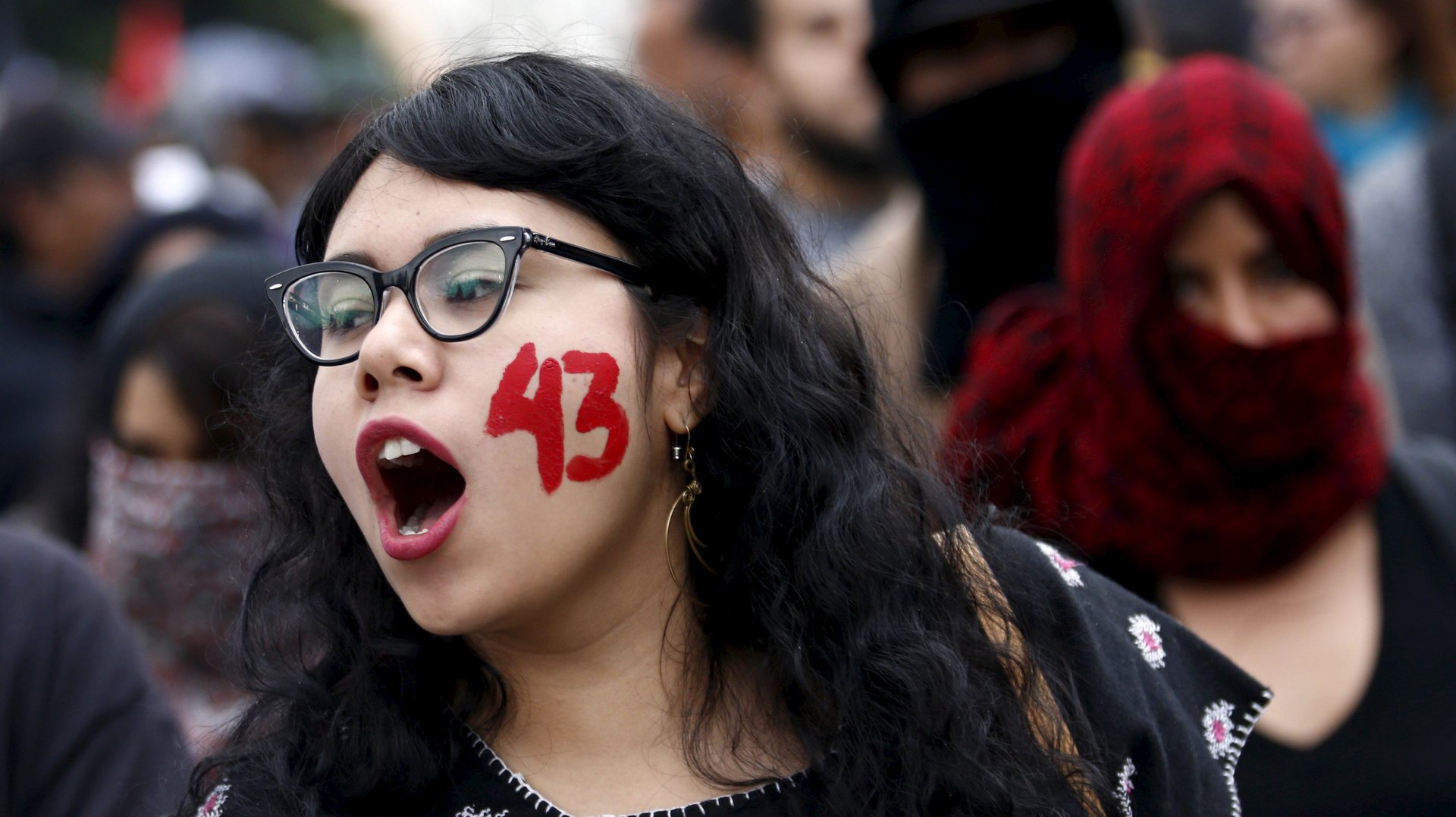The Missing 43: Investigators hired by Mexico say they were obstructed at every turn
An international group of investigators looking into the disappearance of 43 students is leaving Mexico without having found them.


An international group of investigators looking into the disappearance of 43 students is leaving Mexico without having found them.
On Sunday, the Interdisciplinary Group of Independent Experts (GIEI for its acronym in Spanish) handed in its last report. The 600-plus-page document (pdf, in Spanish) says more about the ineffectiveness of the Mexican justice system than the suspected whereabouts of the students from a rural teachers college in Ayotzinapa, Guerrero. The students were abducted in September 2014. What happened to them is still unknown.
The GIEI came to Mexico after the government signed an agreement with the Inter-American Commission on Human Rights in 2014 to get technical help with the case, which has become a symbol of the thousands of unsolved disappearances in the country. At the time, it was hailed as a historic opportunity to address the broader problem.
But after GIEI reported that findings that were substantially different from the government’s official version, beginning with the group’s first report (Spanish) last year, it faced multiple obstacles that “limited in a very significant way the possibility of advancement,” the group said in its latest installment. The GIEI says it did not get full access to government officials and other information relevant to the case, and faced significant delays in obtaining the information it did get. Up until a few days before its report was due, only half of its requests had been fulfilled, the group said.
The office of Mexico’s attorney general has a substantially different reading of the facts, though. In a statement to the media after the release of the GIEI report, it said it provided the group full access and help. The case, said assistant attorney general Eber Omar Betanzos Torres, is the fullest criminal investigation in Mexico’s history. ”On top of that it has included unprecedented exercises in international collaboration, transparency and work with victims,” he added.
Nonetheless, GIEI said it came across instances of misinformation, and of evidence inexplicably destroyed. For example, as part of its final report, the group included video (available here) that shows government agents searching a key site in the investigation and collecting objects in Ziploc bags. The official record, GIEIE said, makes no mention of the search, and indicates that the evidence it turned up had been found a day later.
The government also reportedly broke an agreement (Spanish) it had made with the group to jointly arrange an analysis of a fire at a dump where the students’ bodies were allegedly incinerated; instead it unilaterally released its results. And Mexican officials launched an investigation into the executive secretary of the Inter-American Commission on Human Rights, Emilio Alvarez Icaza, accusing him of misusing funds granted by the government to GIEI for its work. It later dropped the investigation after the commission condemned it (Spanish.)